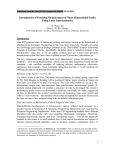Download Agilent 10716A High-Resolution Interferometer
Transcript
7H Agilent 10716A High-Resolution Interferometer Chapter 7H Agilent 10716A High-Resolution Interferometer Description Description The Agilent 10716A High Resolution Interferometer (see Figure 7H-1) offers twice the resolution of conventional plane mirror interferometers and has the same excellent thermal characteristics as the Agilent 10706B interferometer (typically, only 0.04 micron of drift per degree C). Measurement drift is typically 1/12 of that exhibited by a conventional plane mirror interferometer. These features result in improved accuracy, repeatability, and positioning capability. Although the Agilent 10716A interferometer is larger than the conventional plane mirror interferometer and the slew rate is halved, the finer resolution of this optic allows laser measurement system measurement resolution of 2.5 nanometers (0.1 microinch) with most Agilent laser electronics. The Agilent 10716A interferometer can be used in the same applications as other Agilent plane mirror interferometers, but with different alignment techniques. A turned configuration (Agilent 10716A-001) is available to turn the beam 90 degrees, thereby eliminating the need for a beam bender. Like other plane mirror interferometers the Agilent 10716A uses plane mirror reflectors such as the Agilent 10724A Plane Mirror Reflector or a suitable user-supplied plane mirror. Figure 7H-2 shows the optical schematic of the Agilent 10716A High Resolution interferometer. The unit consists of a cube corner, a plane mirror converter, a retroreflector, a high-stability adapter, and a polarizing beam splitter. 7H-2 User’s Manual Chapter 7H Agilent 10716A High-Resolution Interferometer Description E Hig h St ab orn er 10 ilit y ETER cu be c OM R FE R HIGH RE UTIO SOL N INT 71 6A Agilent 10716A High Resolution Interferometer Figure 7H-1. Agilent 10716A High Resolution Interferometer User’s Manual 7H-3 Chapter 7H Agilent 10716A High-Resolution Interferometer Description MEASUREMENT PATH (ffA) Measurement Mirror λ Plates λ/4 High Reflector fA± ∆ f fA fA±4 ∆ f fA±4 ∆ f fA fA±3 ∆ f fA±3 ∆ f ∆ fA±2 ∆ f fA±2 ∆ f High Reflector fA± ∆ f ∆ High Reflector f ±3 ∆ f Cube Corners REFERENCE PATH (fB) λ/4 Plates Measurement Mirror High Reflector fB fB High Reflector High Reflector Cube Corners Agilent 10716A (Top View) COMPOSITE (ffA and fB) λ/4 Plates High Reflector Measurement Mirror fA± ∆ f fB fA fA±4 ∆ f fA 3 ∆ f ±2 ∆ f fA± ∆ f fA±3 ∆ f fA±2 ∆ f fA±2 ∆ f High Reflector f fA ± ∆ High Reflector fA±3 ∆ f Cube Corners Agilent 10716A (Top View) LEGEND = fA = = fB fA and fB Rounded corners are used to help you trace paths. Figure 7H-2. Agilent 10716A High Resolution Interferometer, optical schematic 7H-4 User’s Manual Chapter 7H Agilent 10716A High-Resolution Interferometer Special Considerations Special Considerations Mounting Adjustable mounts The Agilent 10711A Adjustable Mount provides a convenient means of mounting, aligning, and securely locking the Agilent 10716A interferometer in position. Since the mount allows some tilt and yaw adjustment, the need for custom fixturing is minimized. The mount allows the interferometer to be rotated about its centerline, simplifying installation. Fasteners The Agilent 10716A interferometer is supplied with English mounting hardware, which is required to fasten it to its adjustable mount. Installation Pre-installation checklist In addition to reading chapters 2 through 4, and Chapter 15, “Accuracy and Repeatability,” complete the following items before installing a laser positioning system into any application. Complete Beam Path Loss Calculation (see “Calculation of signal loss” in Chapter 3, “System Design Considerations,” of this manual). You must supply the plane mirror reflectors if the Agilent 10724A Plane Mirror Reflector will not work for your installation. See Chapter 15, “Accuracy and Repeatability,” Chapter 6, “Beam-Directing Optics,” or Chapter 7, “Measurement Optics,” in this manual for mirror specifications. Determine the direction sense for each axis, based on the orientation of the laser head, beam-directing optic, and interferometer. Enter the direction sense for each axis into the measurement system electronics. (See Chapter 5, “Laser Heads,” Chapter 14, “Principles of Operation”, and Chapter 15, “Accuracy and Repeatability,” in this manual. Provide for aligning the optics, laser head, and receiver(s) on the machine. (Ideally, you want to be able to translate beam in two directions and rotate beam in two directions for each interferometer input. This typically takes two adjustment optics with proper orientations.) User’s Manual 7H-5 Chapter 7H Agilent 10716A High-Resolution Interferometer Alignment Be sure to allow for transmitted beam offset of beam splitters (Agilent 10700A and Agilent 10701A) in your design. (See the offset specifications under the “Specifications and Characteristics” section at the end of this subchapter.) Alignment The objective of these instructions is to align the Agilent 10716A to make measurements with 1) minimal cosine error and thermal drift and 2) maximum signal strength at the Agilent 10780C, Agilent 10780F, Agilent E1708A, or Agilent E1709A receiver. The procedure below assumes that the plane mirror reflector is the movable optic and has been installed perpendicular to the axis of travel (see the Agilent 10724A installation procedure for details.). Before proceeding with the alignment procedures, details on interferometer configurations and alignment aids are covered. Configurations The two configurations available for the High Resolution Interferometer allow flexibility in optical layout of a measurement system. They are: • Standard • Turned (10716-001) Figures 7H-3 and 7H-4 illustrate the location of the measurement beams for each configuration. AGILENT 10716A BEAM LOCATIONS TION INTER LU High ROMETER FE H RES HIG O Adapter Stability cube corner 10716A 12.7 mm (0.50) Standard Configuration Figure 7H-3. Beam Locations for standard Agilent 10716A Interferometer 7H-6 User’s Manual Chapter 7H Agilent 10716A High-Resolution Interferometer Alignment Agilent 10716A-001 BEAM LOCATIONS 8.1 mm (0.32) 12.7 mm (0.50) Adapter METER ERO RF Opt. 001 HIGH TIO SOLU N INT E RE High Stability cube corner 10716A Turned Configuration Figure 7H-4. Beam Locations for Agilent 10716A-001 Turned Configuration Alignment Aids The Agilent 10716A High Resolution Interferometer is supplied with two of the alignment aids shown in Figure 7H-5. • Alignment Aid, Agilent Part Number 10706-60001 • Alignment Aid, Agilent Part Number 10706-60202 Alignment Aid Agilent Part Number 10706-60202 eases the autoreflection alignment for the high stability adapter to achieve minimal thermal drift and maximum signal strength. It contains a quarter-wave plate to reflect the reference beam back on itself and return it to the laser without offset. Figure 7H-8 shows how the aid is positioned between the beam splitter and the high stability adapter during alignment. User’s Manual 7H-7 Chapter 7H Agilent 10716A High-Resolution Interferometer Alignment ALIGNMENT AIDS FOR AGILENT 10716A Alignment Aid Insert between Beam Splitter and High Stability reflector during autoreflection. Caution: Fragile GET REMOVE TAR NG AFTER ALIGNI logies Agilent Techno P/N 10706-60202 Alignment Aid P/N 10706-60001 Alignment Aid P/N 10706-60202 Figure 7H-5. Alignment Aids for the Agilent 10716A Interferometer Alignment Overview The alignment procedure is a five-part process. • Alignment of the laser beam perpendicular to the plane mirror reflector using autoreflection. • Alignment of the Agilent 10716A Interferometer to the beam, using a reflective gage block and autoreflection. • Realignment of the laser beam, to correct for slight angular beam deviation caused by the interferometer. • Alignment of the reference reflector in the interferometer, for minimum thermal drift and maximum signal strength. • Installation of the Agilent 10780C, Agilent 10780F, Agilent E1708A, or Agilent E1709A receiver to properly receive the reference and measurement beams. 7H-8 User’s Manual Chapter 7H Agilent 10716A High-Resolution Interferometer Alignment Alignment Procedure This alignment procedure is for the “Standard Configuration”, with the laser beam entering the interferometer in aperture B. The alignment procedure for the “Turned Configuration” is similar, except it is more sensitive to angular alignment of the interferometer. NOTE Either aperture A or B of the interferometer may be used as the input aperture. The remaining aperture is the output. 1 Select the small aperture on the laser head. 2 The laser beam for each axis should be aligned perpendicular to the measurement mirror. This is done by autoreflecting off this mirror and adjusting the laser head or beam bender until the reflected beam is centered in the small aperture on the laser head. 3 Move the interferometer so the laser beam enters the input aperture (aperture B, in this example). 4 Place a rectangular gage block over the input aperture so the laser beam is reflected back toward the laser. (See Figure 7H-6.) 5 Adjust the interferometer in pitch and yaw until the laser beam is autoreflected back into the laser head, ensuring proper alignment. It may be necessary to move the interferometer again to center the laser beam on the input aperture. Use a piece of translucent tape to help observe the beam. 6 Remove the gage block. Note that the autoreflection procedure above is used only to reduce clipping, and is not as critical as the autoreflection procedure used to reduce cosine error. As long as the four beams are not clipped, the alignment of the interferometer is adequate. The next steps refine the alignment to reduce cosine error. 7 Place the alignment aid (Agilent Part Number 10706-60001) over the output aperture (plane mirror converter) on the interferometer such that the measurement beam passes through the aperture on the alignment aid. (See Figure 7H-7.) User’s Manual 7H-9 Chapter 7H Agilent 10716A High-Resolution Interferometer Alignment AGILENT 10716A WITH GAGE BLOCK HIGH RESO TION INTER LU High ETER ROM FE Laser Beam Stability cube corner 10716A Gage Block Figure 7H-6. Agilent 10716A with gage block attached AGILENT 10716A USING 10706-60001 ALIGNMENT AID RE AF MOV TE E T R AL ARG IG NIN ET Te G ch no log ies Alignment Aid Part Number 10706-60001 Ag ile nt Measurement Beam Figure 7H-7. Agilent 10716A with alignment aid attached over measurement beam 8 Select the small aperture on the front turret of the laser head. The return beam from the moving plane mirror may not autoreflect back to the small aperture of the laser head as it did in step 5. This must be corrected. Adjust the laser beam until the laser beam is perpendicular to the measurement mirror. This step requires pitching and yawing the laser head, beam benders, or beam splitters, depending on optical layout. 9 If substantial adjustment of the laser beam was required in step 8, the interferometer will have to be repositioned so that the beam goes through the center of the input aperture. Repeat steps 1 through 5 and secure the interferometer to its mount. 7H-10 User’s Manual Chapter 7H Agilent 10716A High-Resolution Interferometer Alignment NOTE The Agilent 10716A High Resolution Interferometer is now aligned for minimum cosine error. The final steps (10 through 23) will align the reference reflector for minimum thermal drift coefficient and maximum signal strength. 10 Remove the Plane Mirror Converter assembly (i.e., the quarter-wave plate) from the measurement side of the interferometer by loosening one cap screw and removing the other. 11 Block the measurement beam and select the small aperture on the laser head. 12 Insert the Alignment Aid (Agilent Part Number 10706-60202) between the now-exposed glass beam splitter and the reference reflector (the one with the four adjustment cap screws and two springs). See Figure 7H-8. This will allow the reference beam to autoreflect back toward the small aperture on the laser head. 13 Return light will now be visible from this reflector near the laser output aperture. 14 Now adjust TWO of the small cap screws on the housing so that this return beam autoreflects back into the small output aperture of the laser. 15 GENTLY snug the other two cap screws while observing the return beam on the output aperture. Preserve the beam alignment. 16 Remove the alignment aid (Agilent Part Number 10706-20202) and replace the Plane Mirror Converter. 17 Unblock the measurement beam. 18 Verify autoreflection of the measurement beam by attaching the magnetic alignment aid to the output (measurement) side of the interferometer and observing the autoreflected beam on the laser aperture. Remove the magnetic alignment aid. 19 Verify that you now see four unclipped spots in a rectangular pattern on the face of the measurement plane mirror. (The room lights may have to be dimmed to see these weak spots of scattered light.) 20 Install the Agilent 10780C or Agilent 10780F Receiver so that light from the top aperture (“A” aperture) of the interferometer enters the center of the lens, parallel to the optical axis of the lens. User’s Manual 7H-11 Chapter 7H Agilent 10716A High-Resolution Interferometer Alignment 21 With a piece of translucent tape over the lens, verify that the spots from Reference and Measurement beams overlap adequately. USING THE AGILENT 10706-60202 ALIGNMENT AID EL SU RO OTLIU H ES O R HIG 107 ta S e ty ili b b cu C A ER 6 70 RT MEE er rn o 10 NERTEFERRFOERMOE NTI T I IO h ig 1H6 IA TN H GH Ali g nm Ins en e an rt b tA d H etw du ig ee id h rin S n Ca g au tabi Beam uti tor lity S on efle ref plit : F cti lec ter rag on. tor ile Figure 7H-8. Using the Agilent 10706-60202 Alignment Aid 22 If these spots do not overlap at the receiver, the alignment should be rechecked. It may be necessary to adjust the Reference Reflector adjustment screws to improve overlap. 23 Select the large aperture at the output of the laser head and traverse the full travel at the machine. Verify that the LED indicator on the receiver is lighted through the full travel and the voltage measured at the receiver test point is between 0.6 and 1.3 Vdc. 7H-12 User’s Manual Chapter 7H Agilent 10716A High-Resolution Interferometer Specifications and Characteristics Specifications and Characteristics Specifications describe the device’s warranted performance. Supplemental characteristics (indicated by TYPICAL or NOMINAL) are intended to provide non-warranted performance information useful in applying the device. Using electronic resolution extension, the system resolution is increased significantly. Depending on the system, an additional resolution extension factor of 32 (for Agilent 10885A and 10895A) or 256 (for Agilent 10897B and 10898A) is usually available. Interferometer Fundamental Optical Resolution System Resolution 1 (see NOTE) System Resolution 2 (see NOTE) Agilent 10716A λ /8 (79.1 nm, 3.1 µin) λ /256 (2.5 nm, 0.1 µin) λ /2048 (0.31 nm, 0.012 µin) NOTE The system resolution 1 is based on using 32X electronic resolution extension. This is available with the Agilent 10885A and Agilent 10895A electronics. The system resolution 2 is based on using 256X electronic resolution extension. This is available with the Agilent 10897B and Agilent 10898A electronics. User’s Manual 7H-13 Chapter 7H Agilent 10716A High-Resolution Interferometer Specifications and Characteristics Agilent 10716A High Resolution Interferometer (and 10716A-001 Turned Configuration) Specifications Weight: 502 grams (1.11 pounds) Typical values are: Dimensions: see figure below 6 minutes for 152 mm (6 inches) Materials Used: 3 minutes for 305 mm (12 inches) Housing: 416 Stainless Steel and 6061 Aluminum 2 minutes for 508 mm (20 inches) Spacers: Nylon MEASUREMENT MIRROR RECOMMENDATIONS Optics: Optical Grade Glass Reflectance: 98% for 633 nanometers at normal incidence Adhesives: Low Volatility (Vacuum Grade) Optical Efficiency: (including a 98% efficient plane mirror reflector and Flatness: Depending on the application and accuracy the Reference Mirror) requirements of the application, mirror flatness may range from λ /4 to λ /20; i.e., 0.16 to 0.03 µmeters (6 to 1.2 µinches). Typical: 30% Worst Case: 25% Thermal Drift Error: Optical Surface Quality: 60 - 40 per Mil-0-13830 (Change of indicated distance per degree C temperature change): 0.05 micron/°C (1.6 µinch/°C) typical NOTE: Flatness deviations will appear as measurement errors Fundamental Optical Resolution: λ /8 kinematic so as not to bend mirror. If accuracy requirements Non-linearity Error: ±1 nanometer (0.04 microinch) demand it, mirror flatness might be calibrated (scanned and Maximum Transmitted Beam Deviation: 30 minutes of arc stored in the system controller) to be used as a correction Maximum Mirror Pitch/Yaw Tolerance:* factor. Depends on distance between mirror and interferometer. *Misalignment of interferometer to measurement mirror will degrade the Thermal Drift Coefficient. when the mirror is translated across the beam. Mount should be 90.2 mm (3.55) See Note 12.7 mm (0.50) 38.9 mm (1.53) LU TION INTER High Stability OMETER HIGH RE S O R FE B 12.7 mm (0.50) SYM @ Center Line 85.9 mm (3.38) 32.0 mm (1.26) 10716A 8.1 mm (0.32) 23.9 mm (0.94) 6-32 UNC (4 Places) Thru Clearance For No. 4 or 2 5 mm 28.4 mm (1.12) 32.0 mm (1.26) To/From Mirrors From Laser 12.7 mm (0.50) 38.1 mm (1.50) 28.4 mm (1.12) Note To Receiver 14.0 mm (0.55) For 10716A-001, this dimension is 100.1mm (3.94). Figure 7H-9. Agilent 10716A High Resolution Interferometer (and Agilent 10716A-001 Turned Configuration) 7H-14 User’s Manual Product specifications and descriptions in this document subject to change without notice. Copyright (C) 2002 Agilent Technologies Printed in U.S.A. 07/02 This is a chapter from the manual titled: Laser and Optics User's Manual For complete manual, order: Paper version: p/n 05517-90045 CD version: p/n 05517-90063 This chapter is p/n 05517-90115
















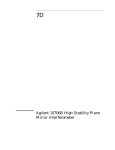
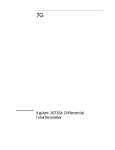

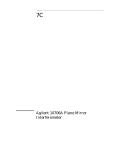
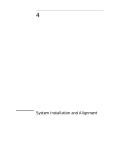






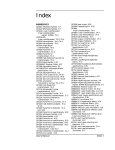





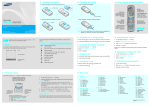
![1] n T169](http://vs1.manualzilla.com/store/data/005696581_1-b5b272b0c99ea5fca956b563015d9b67-150x150.png)
